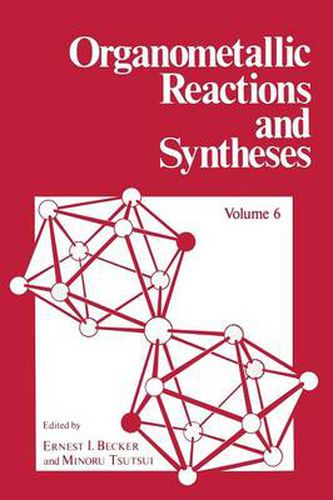Readings Newsletter
Become a Readings Member to make your shopping experience even easier.
Sign in or sign up for free!
You’re not far away from qualifying for FREE standard shipping within Australia
You’ve qualified for FREE standard shipping within Australia
The cart is loading…






This title is printed to order. This book may have been self-published. If so, we cannot guarantee the quality of the content. In the main most books will have gone through the editing process however some may not. We therefore suggest that you be aware of this before ordering this book. If in doubt check either the author or publisher’s details as we are unable to accept any returns unless they are faulty. Please contact us if you have any questions.
The primary literature on organometallic chemistry has undergone phenomenal growth. The number of papers published from 1951 to 1976 is about equal to all prior literature. Together with this intense activity there has developed a complexity in the literature. Thus, specialized texts and teaching texts, a review journal, an advanced series, and a research journal have all appeared during this period. The present series also reflects this growth and recognizes that many categories of organometallic compounds now have numerous representatives in the literature. The purpose of Organometallic Reactions and Syntheses is to provide complete chapters on selected categories of organometallic compounds, describing the methods by which they have been synthesized and the reactions they undergo. The emphasis is on the experimental aspects, although struc tures of compounds and mechanisms of reactions are discussed briefly and referenced. Tables of all of the compounds prepared in the category under consideration and detailed directions for specific types make these chapters particularly helpful to the preparative chemist. While the specific directions have not been referenced in the same way. as are those in Organic Syntheses and Inorganic Syntheses, the personal experiences of the authors often lend special merit to the procedures and enable the reader to avoid many of the pitfalls frequently encountered in selecting an experimental procedure from the literature.
$9.00 standard shipping within Australia
FREE standard shipping within Australia for orders over $100.00
Express & International shipping calculated at checkout
This title is printed to order. This book may have been self-published. If so, we cannot guarantee the quality of the content. In the main most books will have gone through the editing process however some may not. We therefore suggest that you be aware of this before ordering this book. If in doubt check either the author or publisher’s details as we are unable to accept any returns unless they are faulty. Please contact us if you have any questions.
The primary literature on organometallic chemistry has undergone phenomenal growth. The number of papers published from 1951 to 1976 is about equal to all prior literature. Together with this intense activity there has developed a complexity in the literature. Thus, specialized texts and teaching texts, a review journal, an advanced series, and a research journal have all appeared during this period. The present series also reflects this growth and recognizes that many categories of organometallic compounds now have numerous representatives in the literature. The purpose of Organometallic Reactions and Syntheses is to provide complete chapters on selected categories of organometallic compounds, describing the methods by which they have been synthesized and the reactions they undergo. The emphasis is on the experimental aspects, although struc tures of compounds and mechanisms of reactions are discussed briefly and referenced. Tables of all of the compounds prepared in the category under consideration and detailed directions for specific types make these chapters particularly helpful to the preparative chemist. While the specific directions have not been referenced in the same way. as are those in Organic Syntheses and Inorganic Syntheses, the personal experiences of the authors often lend special merit to the procedures and enable the reader to avoid many of the pitfalls frequently encountered in selecting an experimental procedure from the literature.